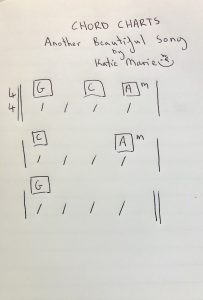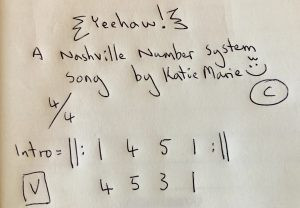Being prepared with accurate chord charts is essential for any musician, especially when you’re just starting your guitar journey. Imagine walking into a jam session or wanting to learn your favorite song, and having a simple, easy-to-read guide right in front of you. That’s where simple guitar chords charts come in. For beginners, these charts are your roadmap to quickly grasping songs and playing along. Forget complex musical scores for now; let’s explore the world of simple chord charts that will get you strumming your guitar in no time.
Understanding Chord Charts: A Beginner’s Perspective
Before we dive into different types of charts, let’s understand what a chord chart essentially is. Think of it as a simplified musical notation. Instead of writing out every single note, a chord chart focuses on the chords needed to play a song. For guitarists, especially beginners, this is incredibly helpful because it tells you exactly what chords to play and when to play them, without overwhelming you with too much detail. It’s all about getting you playing your guitar and enjoying music as quickly as possible.
Types of Simple Chord Charts for Guitar Beginners
There are several ways to create simple chord charts, each with its own advantages. For beginners, starting with the most straightforward methods is often the best way to go. Let’s look at a few common types:
1. Lyrics with Chords: The Easiest Start
 Lyrics with chords
Lyrics with chords
Alt text: Example of lyrics with chords chart, showing song lyrics with guitar chords written above the words.
This is by far the simplest type of chord chart and a fantastic starting point for beginner guitarists. As the name suggests, it combines the lyrics of a song with chord names written directly above the words where the chord changes occur.
Why it’s great for beginners:
- Super easy to follow: You don’t need to know any music theory to read this. Just follow the lyrics and change to the indicated chord when you see it above the words.
- Focus on rhythm and timing: While it doesn’t specify the exact rhythm, it naturally guides you through chord changes as you sing or listen to the song.
- Perfect for learning songs quickly: If you want to quickly learn to play along to your favorite songs, lyrics with chords charts are your best friend.
Example:
(G) (C)
Hey Jude, don't make it bad
(G) (D)
Take a sad song and make it betterIn this example, you’d strum a G chord until you reach “Jude,” continue with G until “bad,” then switch to a C chord for “bad,” and so on. It’s intuitive and gets you playing immediately.
2. Basic Chord Charts with Rhythm Markings
 Chord Charts
Chord Charts
Alt text: Simple chord chart example in 4/4 time signature with rhythm markings indicating beats per chord for guitar playing.
Moving a step further, we have basic chord charts that not only show the chords but also give you a sense of rhythm. These charts are still simple but introduce the concept of musical bars and beats, which is fundamental to music.
Key elements for beginners:
- Time Signature: Usually at the top (like 4/4), telling you how many beats are in each bar. For beginners, 4/4 is the most common and easiest to understand – four beats per bar.
- Bars: The music is divided into bars (or measures), visually separated by vertical lines.
- Chords per Bar: The chords are written in sequence for each bar.
- Rhythm Markings (optional but helpful): Some charts use lines or dashes under chords to indicate how long each chord is played within a bar.
Example (in 4/4 time):
| G G C Am |
| G C G D |In this chart, each bar represents 4 beats. In the first bar, you might play G for two beats, C for one beat, and Am for one beat. This type of chart starts to give you a better feel for the rhythm of the song. For guitar beginners, focusing on down strums for each beat initially is a great way to start.
3. Nashville Number System: A Flexible Approach (For Later)
 Nashville Number System
Nashville Number System
Alt text: Example of a Nashville Number System chart showing numbers representing chords in a key, useful for transposing guitar songs.
The Nashville Number System is a bit more abstract but incredibly useful, especially as you advance. It uses numbers instead of chord names to represent chords within a key.
Basic idea for beginners to understand (you might not use this immediately):
- Numbers represent chords: In any key, the major scale degrees are assigned numbers: 1, 2, 3, 4, 5, 6, 7.
- Key of C example: If a song is in C major, 1 = C, 2 = Dm, 3 = Em, 4 = F, 5 = G, 6 = Am, 7 = Bdim.
- Chart uses numbers: Instead of writing “C – G – Am – F,” a Nashville chart might write “1 – 5 – 6 – 4.”
Why is it helpful?
- Transpose easily: If you need to change the key of a song (maybe it’s too high or low to sing), you can use the same number chart but apply it to a new key.
- Communicate with musicians: It’s a common language among musicians, especially in genres like country and pop.
For absolute beginners, lyrics with chords and basic chord charts are the best starting points. The Nashville Number System is something you can explore as you become more comfortable with chords and music theory.
Creating Your Own Simple Guitar Chord Charts
Ready to make your own simple guitar chord charts? Here’s how to get started:
- Choose Your Song: Pick a song you love and want to learn on guitar. Start with something simple with a clear chord progression.
- Find the Chords: Search online for “[song title] chords.” Many websites provide lyrics with chords for countless songs. Websites like Ultimate-Guitar, Chordify, and others are great resources.
- Lyrics with Chords Chart (Simplest): Copy the lyrics and paste them into a document. Go through the chord version you found and place the chord names above the lyrics where the chord changes happen.
- Basic Chord Chart:
- Identify song sections: Verse, Chorus, Bridge, etc. (Listen to the song and map out its structure). Use abbreviations like V, C, B, as shown in the original article.
- Write out chord progression for each section: List the chords in order for each section, bar by bar. If you know the rhythm, try to indicate beats per chord, or just list chords per bar if starting out.
Tips for Beginner Guitarists Charting Songs:
- Start simple: Begin with lyrics and chords.
- Listen to the song repeatedly: Get the feel of the chord changes and rhythm.
- Use online resources: Don’t reinvent the wheel! Use existing chord resources as a base.
- Practice with your chart: Play along with the song using your chart. Refine it as needed.
Final Thoughts
Simple guitar chord charts are an invaluable tool for any beginner guitarist. They remove the complexity of full musical notation and get you straight to playing music. Whether you prefer lyrics with chords or basic rhythm charts, the goal is to have a clear and easy-to-use guide that helps you learn songs and enjoy playing your guitar. Start with the simplest method, practice consistently, and gradually explore more advanced charting techniques as your skills grow. Happy strumming!

